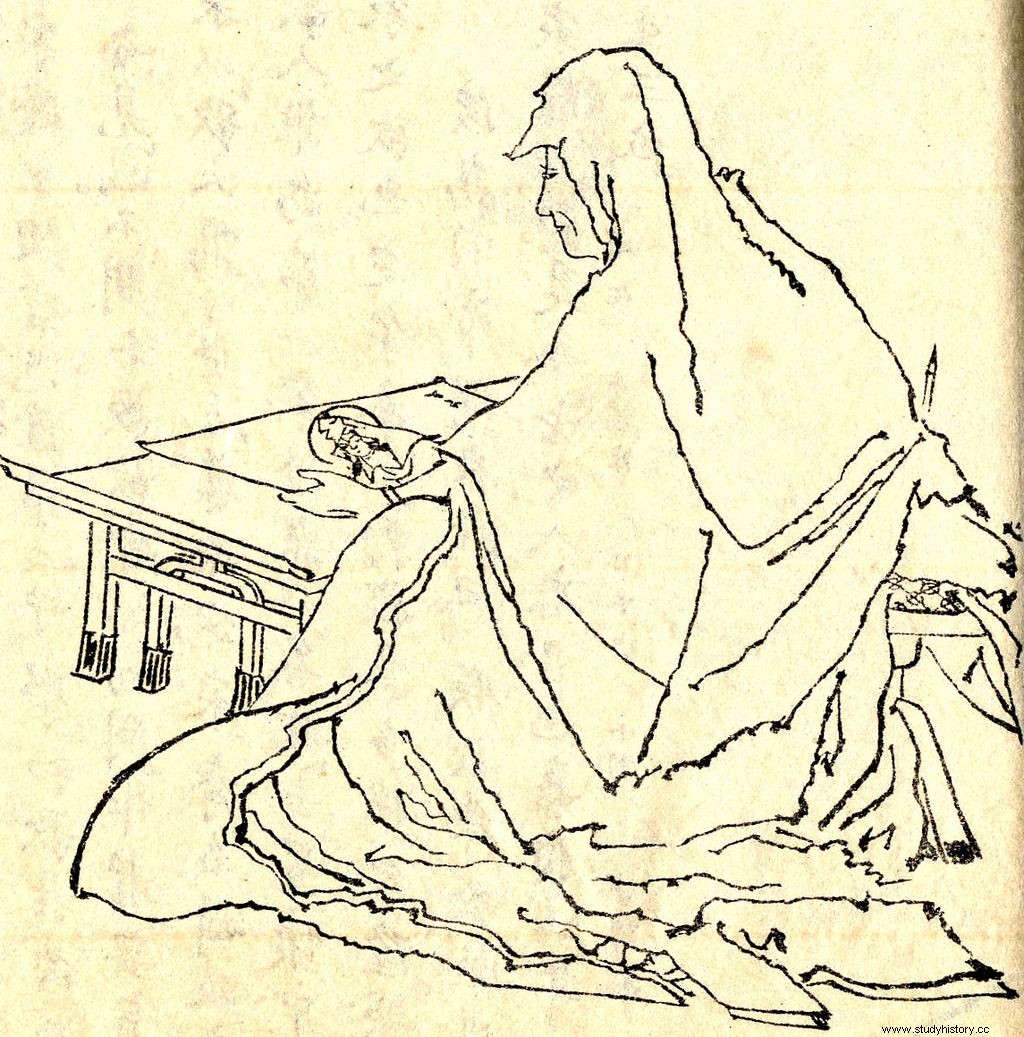Hōjō Masako (1156 – August 16, 1225) was an onna-bugeisha, a female warrior from medieval Japan.
Minamoto no Yoritomo

Born in 1156 in the province of Izu, Hōjō Masako is the daughter of Hōjō no Maki and Hōjō Tokimasa, samurai and leader of the Hōjō clan, a very influential samurai clan. She is the second in a family of five children, three boys and two girls. Her parents are young, and Masako, in her early childhood, was brought up mainly by ladies-in-waiting. Thereafter, she learned horse riding, hunting, fishing. She eats with the men, rather than the women of her family.
In 1163, when Masako was still a child, the Teira clan defeated the Minamoto clan during the Heiji Rebellion, a civil war that briefly inflamed the country. One of the Minamoto clan chief's sons, Minamoto no Yoritomo, aged 13, is sent into exile in Izu province. In 1179, Masako meets the exile; the two fall in love and marry in the same year. They will have a son, Minamoto no Yoriie, who will be their heir, in 1182. They will also have a daughter and another son thereafter.
The Genpei War
In 1180, quarrels over succession inflamed the country again and samurai from the Minamoto clan called for an uprising against the Taira; it is the beginning of the Genpei War, the culmination of decades of episodic conflicts. Supported by the Hōjō clan, Yoritomo answers the call. With his stepfather, he took part in combat for the first time in September 1180, during the battle of Ishibashiyama, in which Masako's older brother lost his life. Yoritomo then becomes heir to the Hōjō clan, in addition to the Minamoto clan. As the fighting continues, Hōjō Masako follows her husband on all his campaigns and is never defeated in battle. In 1185, the Taira were finally defeated in the Battle of Dannoura, and Yorimoto became the most powerful man in Japan after the new emperor, Go-Toba. A woman of character and a fine politician, Masako is involved alongside her husband in the affairs of the country.
The first Shogun
In 1192, Yorimoto became the first Shogun (“great general pacifier of the barbarians”, title designating the military ruler of Japan), appointed as such by Go-Toba who died the following year. Yorimoto shares this power with the Hōjō clan and with Masako. In 1199, Yorimoto also died and his son Minamoto no Yorije became shogun in turn. As he is only eighteen years old, Masako's father, Tokimasa, proclaims himself shikken, or regent. Still influential through the position of her father and son, Hōjō Masako shaves her hair and becomes a Buddhist nun; she does not go to live in a monastery, however, and continues to be involved in politics, forming with her father and brother Yoshitoki a council of regents. The young shogun, however, prefers to surround himself with his in-laws, the Hiki clan, and his stepfather Hiki Yoshikazu. Overhearing a plot by her son and Yoshikazu, Masako reports them to her father. Together, they depose the young shogun. Yoshikazu was executed in 1203; the following year, Yorije was murdered, presumably on Tokimasa's orders and without Masako knowing about it.
Negotiator with the Imperial Court
Hōjō Masako's second son, Minamoto no Sanetomo, became the third shogun, with Tokimasa as regent. After Yorije's murder and the arbitrary execution of their brother-in-law, however, Masako and her brother are furious with their father. Hearing from rumors that his father plans to have the shogun executed to place an ally in his place, Masako and Yoshitoki order him to retire and become a monk, on pain of revolt. In 1205, Tokimasa abdicated; he is sent to a monastery where he will die ten years later. Masako installs her brother Yoshitoki as regent, and becomes negotiator with the imperial court.
In 1219, Sanemoto was executed by his nephew, son of Yorije, who was himself captured by Hōjō troops the same year and executed in turn. The Minamoto line no longer had any male heirs, and Masako and his brother chose Kujō Yoritsune, still a baby at that time, to become the next shogun. In 1224, the regent Yoshitoki died suddenly of illness, and his son succeeded him. The Miura clan then tries to overthrow him, along with Masako and the young shogun, but Masako manages to negotiate and retain the power of the Hōjō.
In 1225, Hōjō Masako died at the age of 69. Because of her strong involvement in politics, she is nicknamed ama-shogun , or "nun-shogun".
